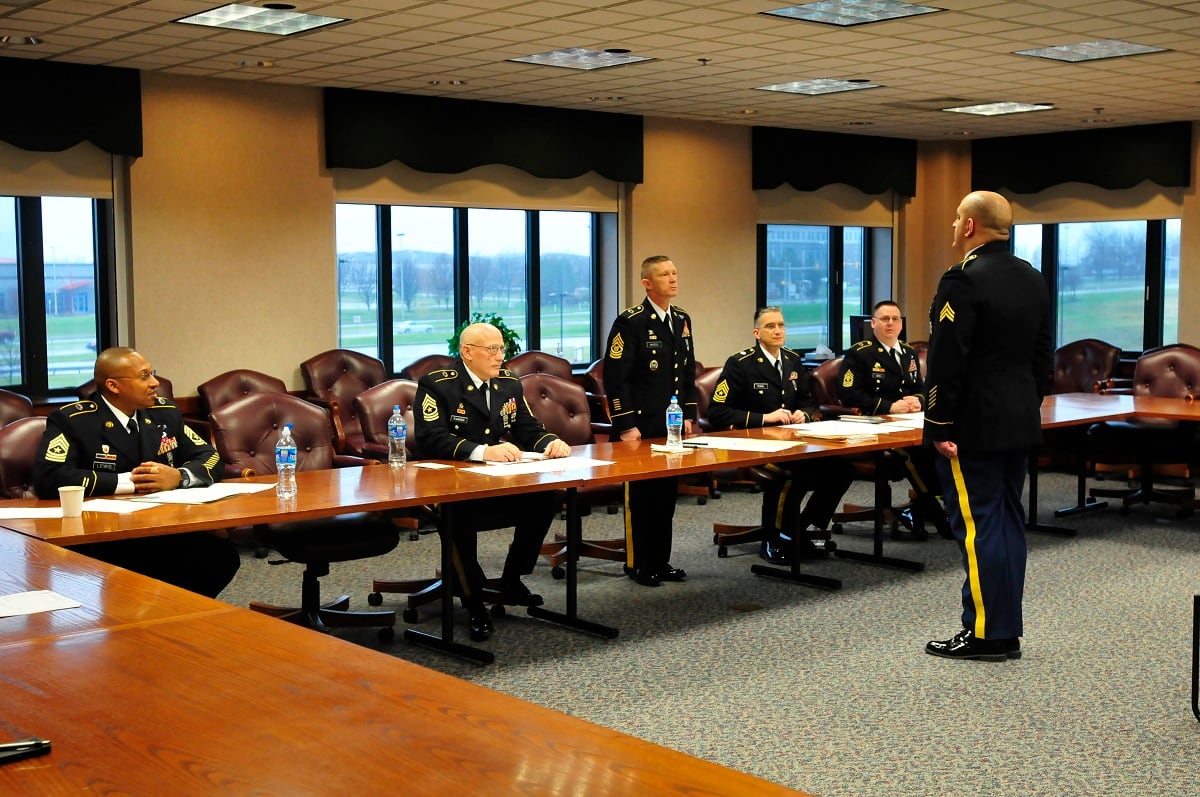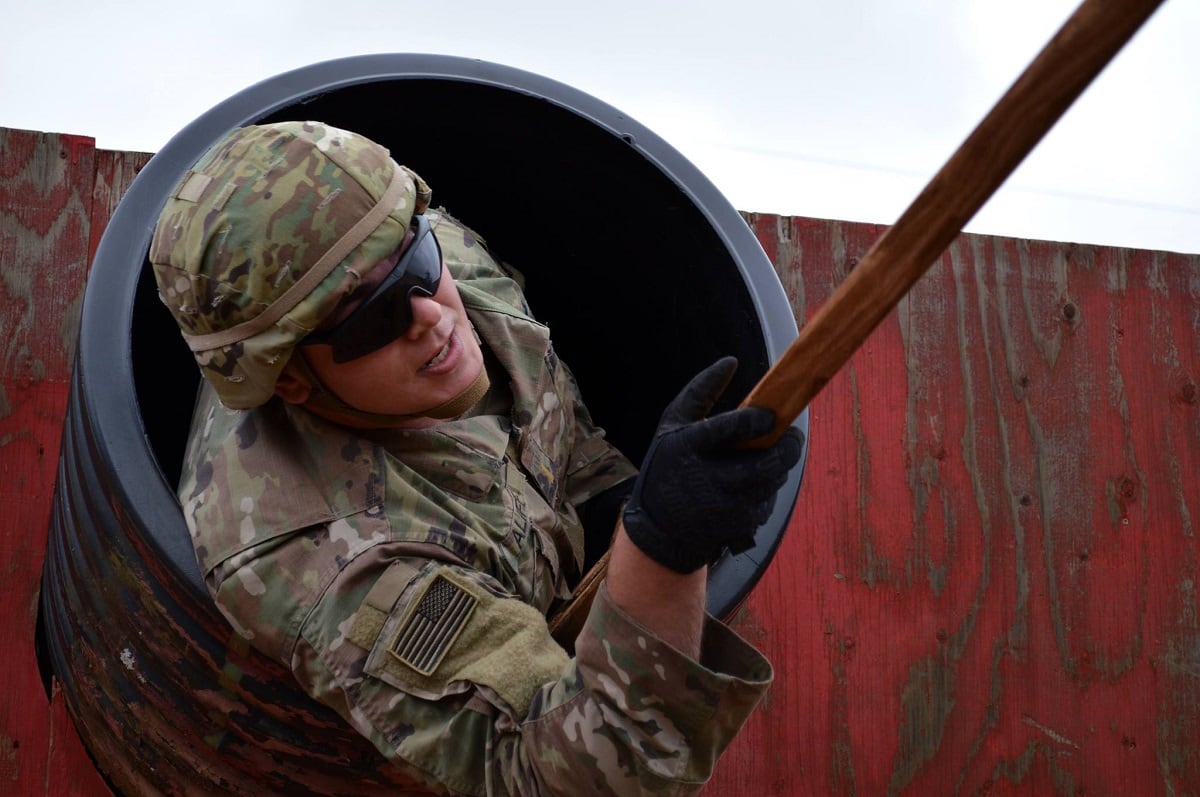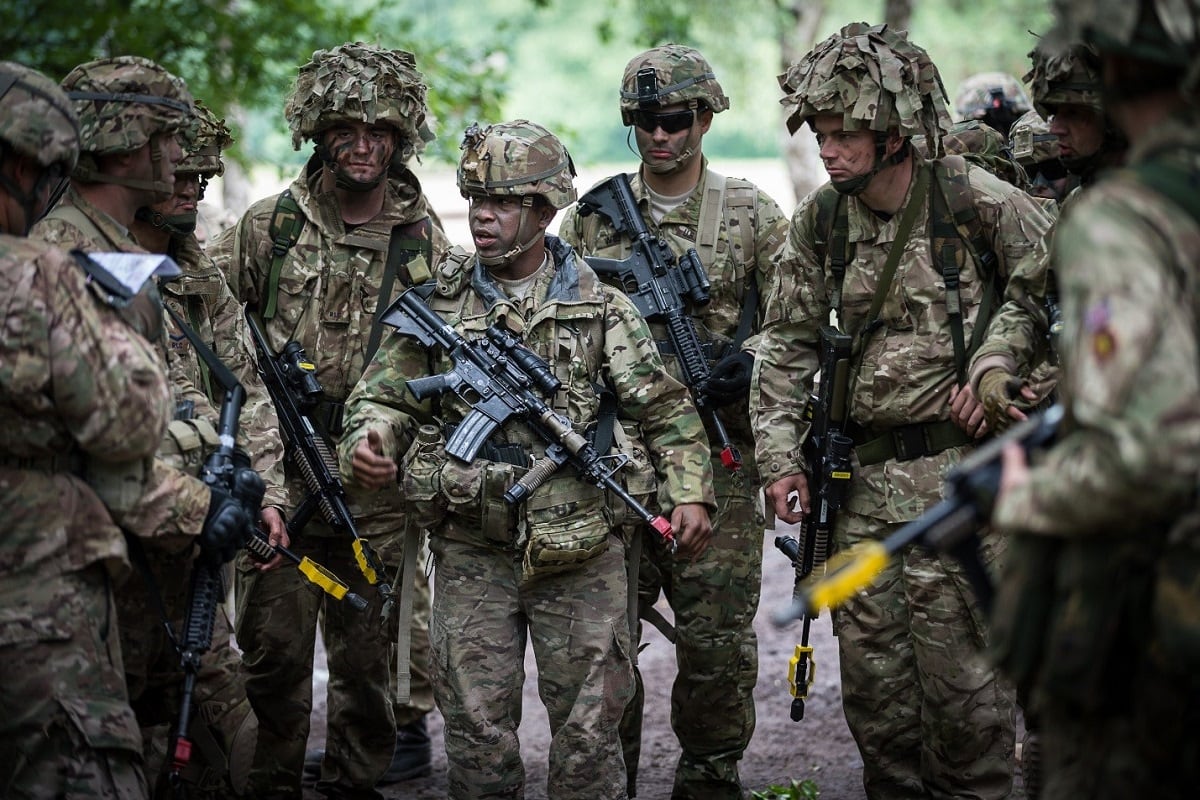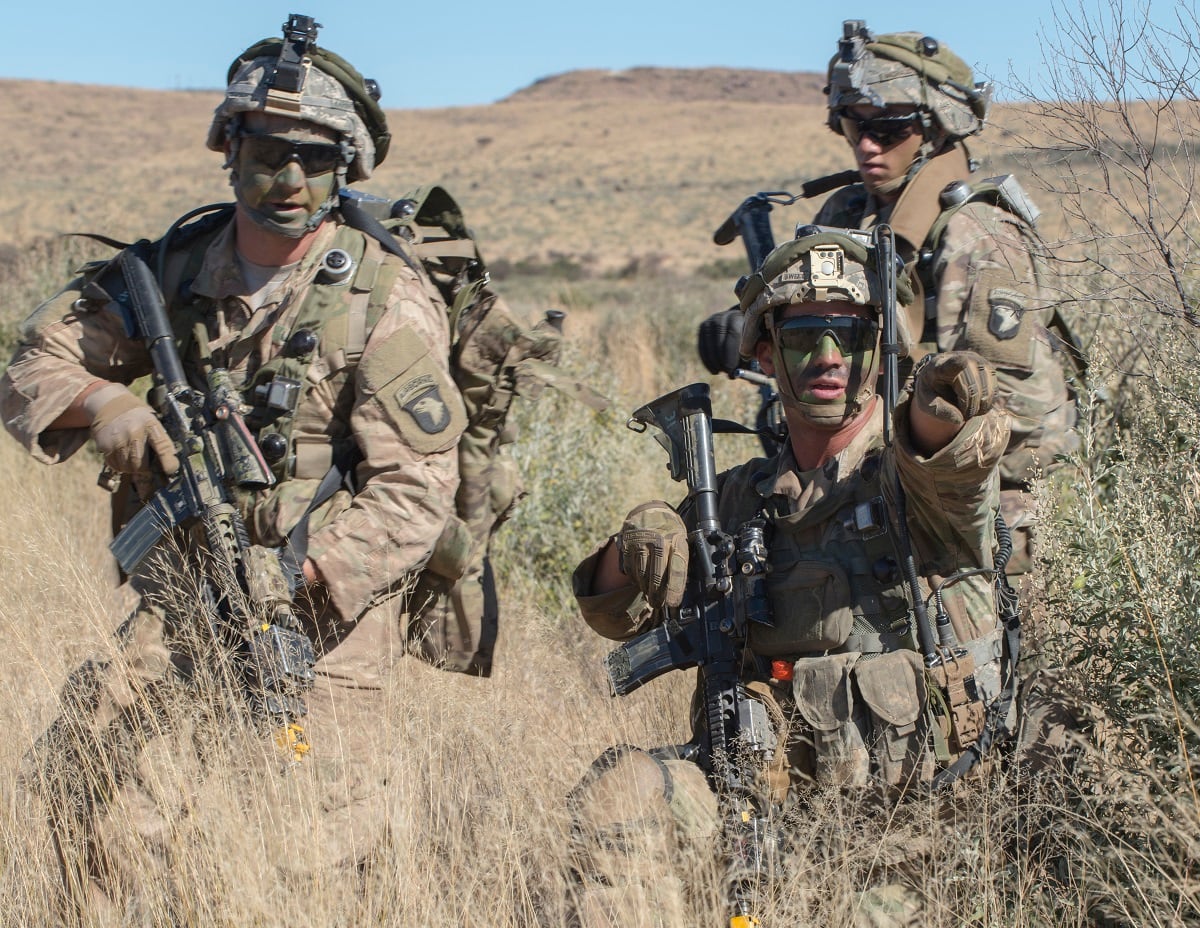As the Army grows for the first time in almost a decade, the service is realizing that there’s a shortage of junior noncommissioned officers to lead the influx of new troops.
The reason for that, officials suspect, is that qualified specialists and sergeants are not moving up in the ranks because it’s up to their immediate chain of command whether they are promoted — and that in the name of promoting their “best,” unit-level commanders are overlooking their other fully-qualified soldiers.
“So, they’re essentially becoming the selection board, saying ‘You’re my best guy, so I’m going to recommend you for promotion. But all you other people, even though you’re in good standing, qualified, and you meet all of the requirements — I’m not going to recommend you because you aren’t my best,’ ” said Jerry Purcell, the Army’s personnel policy integrator, in an interview with Army Times.
But all of that ends thanks to a Dec. 7 directive signed by Army Secretary Mark Esper.
The new policy sends all primary zone specialists and sergeants to their local promotion boards, rather than require nominations from their chain of command.
This turns sergeant and staff sergeant promotions into a centralized system that automatically puts all eligible soldiers on the promotion recommended list, the way it works in the senior noncommissioned officer ranks.
“My expectation is that the vast majority of soldiers will be integrated into the promotion recommended list upon attainment of such eligibility,” Esper wrote, acknowledging the time in grade, operational experience and training benchmarks required for promotion.
The policy will officially go into effect during the May 2018 promotion month, according to an All-Activities message outlining the policy change.
“Appearance before a local promotion board is mandatory for all eligible soldiers,” the Army wrote in the December All-Activities message. “As the Army transitions to this new policy, commands must board all soldiers who will meet/exceed the revised [primary zone] eligibility criteria and are otherwise fully eligible for board appearance by the April 2018 promotion board month.”
That means specialists with 36 months in service and eight months in grade, or sergeants with 84 months in service and 10 months in grade, will automatically go before a local board.
The move normalizes promotion recommendations across the board for NCOs because while appearing before a local board doesn’t guarantee promotion, it ensures an even playing field for all qualified soldiers.

Soldiers in the secondary zone will still need unit commanders to recommend them for promotion.
As an example, a specialist who has met every milestone for promotion to sergeant hits the secondary zone at 18 months of service and six months in grade. If that soldier is not promoted at that point, they will hit the primary zone at 36 months of service and eight months in grade.
“By affording quality soldiers promotion opportunities and, conversely, denying continued service to those who clearly do not show they have the potential for such service, we strengthen our Army and NCO corps,” Esper wrote.
RELATED

In comparison, soldiers advancing to E-7 and above automatically went to the boards, while E-3s and below were automatically promoted once they hit their time in service and time in grade requirements.
Not only will a boost in the E-5 and E-6 ranks give the Army more team and squad leaders, it also will round out the pool of recruiters and drill sergeants charged with developing new soldiers, Sergeant Major of the Army Dan Dailey told Army Times in September.
“Now, … board attendance is mandatory,” he said. “So just like for E-7, E-8 and E-9, if you’re not flagged or barred, your packet goes to the board.”
Sending the best
There’s long been a perception in those middle ranks that promotions were based on favoritism from commanders, but Purcell thinks there’s more going on.
“What I think is happening is they’re thinking, the best people should be promoted,” he said. “But what happens when you limit those individuals at the unit level to ‘the best,’ there’s no robust list for us at the department level to select the best in the Army, as opposed to the best in your unit.”
And, of course, the definition of “best” varies from unit to unit. Some commanders place a high priority on Army Physical Fitness Test results, for example, Purcell said, but that excludes a large group of soldiers who meet Army standards.
“But we are overachievers. We say, ’180 — that’s not very good.’ We say, ‘270 or more,’ for example,” Purcell said, referencing PT test scores. “They impose these unit-based standards to the process, which really hurt the Army in the long run, because they’re not providing those individuals who meet Army standards the opportunity to succeed.”
In other cases, the Army’s choppy billet rotations can make it difficult for a young soldier to make an impression on his or her leadership.
Purcell, a retired sergeant major, said he came up during a time when the service used Army Force Generation, a system that assigned soldiers to units all at once, and they would stay for a full cycle and build relationships with each other.
“There would be this rapport and understanding — I knew my soldiers well,” he said. “Today, we do this sustained readiness model, where we allow — across installations — cross-leveling of individuals to support the missions of the units on a rotational basis and a deployment basis. So, we’re constantly moving.”

In fiscal year 2017, he added, 28 percent of all moves were intra-post transfers, to fill empty spots in units down the road.
“So, every time there’s a move, there’s this idea — ‘I’m not going to recommend you [for promotion], because I need to get to know you,’ ” Purcell said.
In August 2017, Purcell said, there were 6,200 specialists and sergeants who had met their time in service/grade requirements and completed their online training to prepare for promotion, but didn’t go to a board because they weren’t recommended.
“The problem we’re having right now is we don’t have enough soldiers integrated onto the recommended list for us to promote for actual requirements,” he said.
And, perhaps, stymied promotions are contributing to the Army’s attrition rate, because soldiers are getting out when they feel like they can’t make their way up the ranks, he added.
“Soldiers see it as, they’re not being recommended, and they don’t want to stay,” Purcell said. “We’re kind of closing that door, to some degree. We’re not allowing soldiers to fill that potential because we’re not giving them the chance to succeed.”
In the end, he added, the policy won’t affect those who are already the most competitive for promotion — it will only give the Army a deeper bench of qualified prospective NCOs to fill its empty slots.
RELATED

Up or out
Command list integration, which started for prospective sergeants in 2008, did boost E-5 and E-6 promotions, Purcell said, but it didn’t solve the issue of low-level commanders passing over qualified soldiers.
“Well, what I will tell you is that as a soldier ... you should be selected in your secondary zone for consideration,” Dailey said. “That’s when you should be boarded. So, you’re promoted by the time you hit the primary zone.”
That way, soldiers would make a board appearance early on in their promotion eligibility and be promoted before they reach the end of it, which would skip the need for any mandatory list integration.
There was also the question of why those commanders didn’t think their soldiers were ready for the next step, despite meeting Army standards for training and experience.
“Soldiers with no potential — they should be barred from continued service,” Dailey said. “But if the soldier’s in good standing, we want the soldier to go to the board.”

A kind of CLI is still in effect, which after four years in service will put a qualified specialist on the Army-wide promotion list, for headquarters to make the ultimate decision, Purcell said.
Now called mandatory list integration, all soldiers who meet the minimum qualifications for promotion will go on the promotion recommended list.
A specialist in the primary zone must now make a local board appearance by the time they reach 35 months in service and 11 months in grade. If they don’t, they will automatically be added to the mandatory promotion list for consideration at 47 months in service and 23 months in grade.
For a sergeant, it’s 71 months in service and 17 months in grade, followed by 83 months in service and 23 months in grade.
“Ideally, we don’t want to actually integrate anyone on the list. We want leaders in the unit to act accordingly, and take action to either allow the soldiers onto the [local] list — based on their potential — or take action to stop the career of that individual, because they don’t show demonstrated potential to perform at the next level,” Purcell said.
Taking it one step further, a battalion commander won’t be able to take a soldier off that integrated commander list without a qualifying reason, he added, and there won’t be any change in promotion points.
The idea is that leadership should not only give all of their qualified soldiers a chance to get promoted, but if there are any that really should not be promoted, the command will have to deal with it before they get to the CLI stage.
“The data shows that less than 20 percent of specialists, and less than 70 percent of sergeants — who are fully eligible, qualified to pin on based on [professional military education] — are actually integrated on the promotion list,” Purcell said. “You’re telling us that, through your actions — the leadership at the unit level is telling the Army that 80 percent of specialists have no potential to be sergeants in the Army.”
If that’s the case, Purcell added, they should be barred from continued service. But assuming that most of those are falling through the cracks and would make perfectly fine sergeants, leadership should step in and get them up to speed.
“We don’t want commanders to flag them immediately,” he said. “We want them to develop them, to train them.”
They can use that year between the primary zone and CLI to get them in shape, he said. If they’re still not performing, Purcell added, then it’s time to separate them.
“This is about sending a message about what requirements are, and what the Army is really about — up or out,” Purcell said.
The new policy will also apply to the Active Guard and Reserve, he said.
“We always hear that, unless you’re the favorite, you’re not recommended,” Purcell said. “I think it’s going to increase morale. It should increase retention. It should create an environment where young people feel that the institution they’re now a part of sees them as value added.”
Meghann Myers is the Pentagon bureau chief at Military Times. She covers operations, policy, personnel, leadership and other issues affecting service members.




